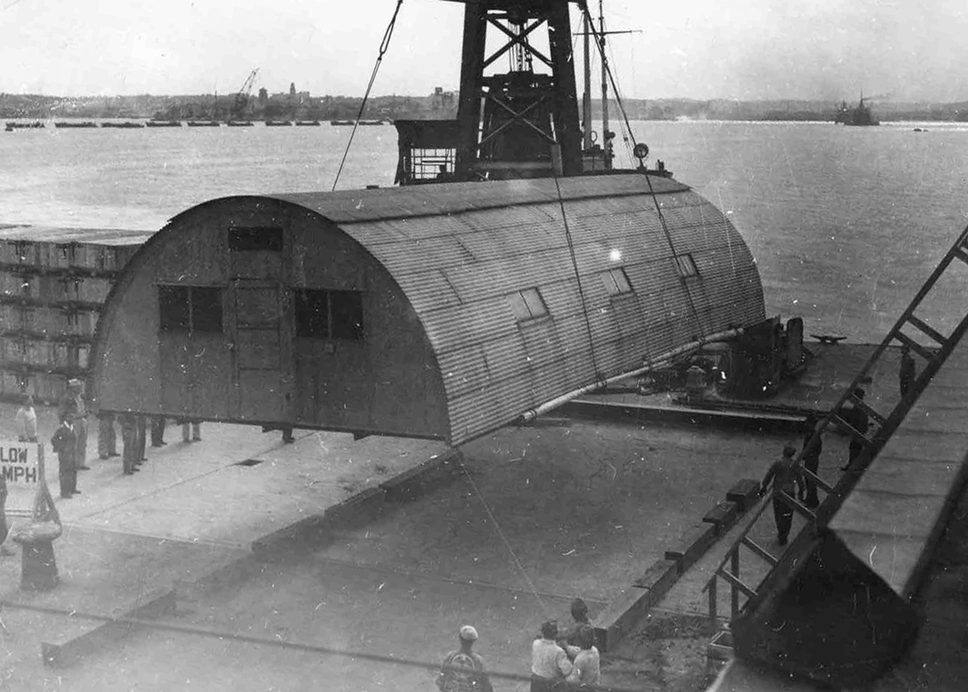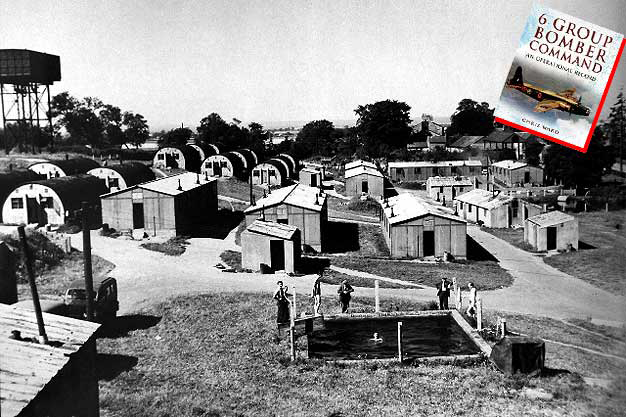If you have never heard of the Quonset Hut, you have probably seen them in old World War II movies and TV shows such as MASH. You might even have seen them used by farmers as oversized sheds. They were mobile huts that could be quickly set up and dismantled as the Armies of the Allies moved through the theatre of war. The Quonset Hut was used with great effect during World War II for military housing, storage and general use. It was the greatest assemble-yourself product long before IKEA came up with the idea. And it had better documentation.
 It is a genius invention and shows what can be done when you combine a pressing need with well-thought through engineering and documentation. A small group of soldiers with very little building experience could assemble a Quonset Hut in a short time and when required take it apart and box it ready for assembly at the next location. It was a brilliant invention and many a soldier or airman thanked the designers for their relative comfort these huts afforded them. They were designed by the George A. Fuller Construction Company and manufactured at Quonset Point at the Davisville Naval Construction Battalion Center in Davisville, Rhode Island, hence their name. As I used to live not far from this base, this location is very familiar to me.
It is a genius invention and shows what can be done when you combine a pressing need with well-thought through engineering and documentation. A small group of soldiers with very little building experience could assemble a Quonset Hut in a short time and when required take it apart and box it ready for assembly at the next location. It was a brilliant invention and many a soldier or airman thanked the designers for their relative comfort these huts afforded them. They were designed by the George A. Fuller Construction Company and manufactured at Quonset Point at the Davisville Naval Construction Battalion Center in Davisville, Rhode Island, hence their name. As I used to live not far from this base, this location is very familiar to me.
A Quonset Hut is a lightweight structure made of a half-tube of corrugated iron sheeting assembled over a supporting lightweight structure of wood with plywood end walls. Depending on requirements, it could be assembled directly on the ground, on a concrete base or on piers. They were designed to be shipped in a set of boxes and assembled by anyone with or without skilled labour. They are a brilliant example of user-friendliness. After preparing a platform of concrete or sand, soldiers could set up these structures with minimum tools such as wrenches and screw-drivers.
 This photo shows a Royal Canadian Air Force (RCAF) Base near Skipton-on-Swale, UK. It shows a set of Quonset Huts and additional wooden structures. My dad often spoke of this place as it was where he was stationed while serving with the Royal Canadian Air Force when his squadron was up there in York before being the unit was transferred to London and then to Torquay for repatriation back to Canada.
This photo shows a Royal Canadian Air Force (RCAF) Base near Skipton-on-Swale, UK. It shows a set of Quonset Huts and additional wooden structures. My dad often spoke of this place as it was where he was stationed while serving with the Royal Canadian Air Force when his squadron was up there in York before being the unit was transferred to London and then to Torquay for repatriation back to Canada.
This got me thinking. What would have been included in a document for assembling a Quonset Hut? Well, here is what I would imagine might be a table of contents for the Assembly Instructions.
Assembly instructions for a Quonset Hut
| Procedure | Description |
|---|---|
| 1. Military statement | Top Secret |
| 2. Introduction | Purpose of this document |
| 3. Legal Disclaimer | Use by military personal only |
| 4. Unpacking Parts Containers | How to unpack the shipping container |
| 5. Parts List | Check the parts list with the contents |
| 6. Tools Requirements | Tools needed to assemble the Hut |
| 7. Safety Issues | Dangers during assembling |
| 8. Site Preparation | Site requirements |
| 9. Assembling the Support Structure | How to bolt structure together |
| 10. Assembling End Walls | Attach end walls to support structure |
| 11. Installing Windows and Doors | Install windows and doors in end walls |
| 12. Attach Corrugated Sheeting on Support Structures | Attach sheeting to structure |
| 13. Insulating the Quonset Hut (optional) | Add insulation between supporting structure and on end walls |
| 14. Installing Interior Walls and Doors | Install interior dividing walls and doors |
| 15. Installing Electricity | Add electrical wiring through support structure |
| 16. Installing Heating Equipment | Add heater or fans |
| 17. Testing the Structure for Soundness | Quality control to test walls and roof |
| 18. Final Sign-Off for Occupancy | Sign-off from superior officers |
| 19. Providing Feedback to Base Operations | Feedback to suppliers |
| 20. Disassembly | Disassembly instructions |
| 21. Packing Shipping Containers | Pack parts in the containers for shipping |
These instructions would be provided with line drawings or photos to help in the assembly of the Quonset Hut.
Would these instructions and accompanying drawings do the trick for the Engineering units deployed to build them? My guess is that, like IKEA instructions, they only needed well-drawn diagrams with minimal accompanying text. Military units from many countries would have to assemble these huts so translating these documents would be time consuming and unnecessary. Simple headings and a few lines of text could be left as they are while the drawings would fill in any gaps of understanding from non-English speakers. As American, Canadian and British soldiers were assumed to know English, other nations using them would do the translating as required.
Undoubtedly the Quonset Hut was a great example of usability. It took the needs of users first and worked around that. It was a very simple structure yet extremely useful and versatile. With minimal documentation it could be assembled in a short time by any service member.
Lesson of the Quonset Hut
The Quonset Hut provides a great lesson for today’s products. Think first about the users. Who are the end-users? How can documentation help them start using the product as quickly as possible? Can the product be used by a wide range of users with diverse skill sets. The Quonset Hut shows us that necessity is indeed the mother of invention. Products that care about the user experience succeed. Those that don’t end up in the rubbish heap of failed ideas. Even today, 80 years later a few Quonset Huts are still around providing a useful service for farmers, mechanics and who knows what else. They survived because of good design and simplicity.
Complication is no badge of honour
Being complicated is no badge of honour. It just means the designers didn’t care to take the effort to understand user needs. The manufacturer of the Quonset Huts at Quonset Point, Rhode Island focused entirely on getting it right. My dad can be thankful for that.
For more information take a look at these: